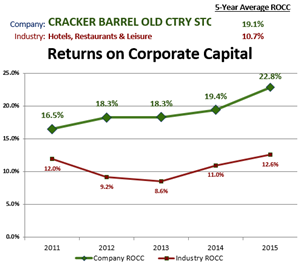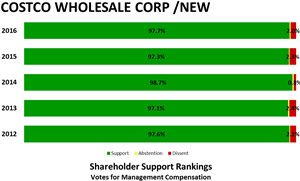
Business Day
A Simple Test to
Dispel the Illusion Behind Stock Buybacks
Fair Game
By
GRETCHEN
MORGENSON
AUG.
12, 2016
|

A trader at the New York
Stock Exchange in June. As shares have climbed, so have the prices
companies pay to buy back their stock.
Credit Lucas Jackson/Reuters
|
Stock
investors have had one sweet summer so far watching the markets edge
higher. With the Standard & Poor’s 500-stock index at record highs and
nearing 2,200, what’s not to like?
Here’s
something. As shares climb, so too do the prices companies are paying
to repurchase their stock. And the companies doing so are legion.
Through July of
this year, United States corporations authorized $391 billion in repurchases,
according to an analysis by
Birinyi Associates. Although 29 percent
below the dollar amount of such programs last year, that’s still a big number.
The buyback beat
goes on even as complaints about these deals intensify. Some critics say that
top managers who preside over big stock repurchases are failing at one of their
most basic tasks: allocating capital so their businesses grow.
Even worse,
buybacks can be a way for executives to make a company’s earnings per share look
better because the purchases reduce the amount of stock it has outstanding. And
when per-share earnings are a sizable component of
executive pay, the motivation to do
buybacks only increases.
| |
Fair Game
A
column from Gretchen Morgenson examining the world of finance
and its impact on investors, workers and families
See More »
|
| |
|
Of
course, companies that conduct major buybacks often contend that the
purchases are an optimal use of corporate cash. But
William Lazonick, professor of
economics at the University of Massachusetts Lowell, and co-director
of its Center for Industrial Competitiveness,
disagrees.
“Executives who get into that mode of thinking no longer have the
ability to even think about how to invest in their companies for the
long term,” Mr. Lazonick said in an interview. “Companies that grow to
be big and productive can be more productive, but they have to be
reinvesting.”
Broadly speaking,
those reinvestments appear to be in decline. Indeed, economists are concerned
about the comparatively low levels of business investment since the economy
emerged from the downturn more than seven years ago. This phenomenon may be
attributable in part to the buyback binge.
One of the best
arguments against stock repurchases is that they offer only a one-time gain
while investing intelligently in a company’s operations can generate years of
returns.
This is the view
of Robert L. Colby, a retired investment professional and developer of
Corequity, an equity valuation service used
by institutional investors.
“The simplest way
to evaluate a company’s asset allocation decisions over the years is to see
whether its net profit growth is close to its earnings-per-share growth,” Mr.
Colby said. “Unlike an investment in the business, share buybacks have no effect
on net profit and there is no compounding in future years.”
Mr. Colby has
developed an illuminating analysis that identifies a crucial difference between
many truly successful companies and their underperforming counterparts. The
exercise highlights the growth mirage that buybacks have on earnings-per-share
measures. In addition, it shows that returns on investment need not be that
large for a company to generate growth rates exceeding the evanescent
earnings-per-share gains associated with buybacks.
In his test, Mr.
Colby compared net profit growth and earnings-per-share gains at pairs of
companies in the same industries from 2008 through 2015. In each case, he
contrasted a company that bought back loads of shares during the period with
another that did not.
One
case study examined
Cracker Barrel Old Country Store and
Jack in the Box, two restaurant chains.
Cracker Barrel bought back only $160 million worth of shares over the period
while Jack in the Box repurchased $1.2 billion, reducing its share count by 37
percent.
Cracker Barrel
passed the net profit test ably: Its growth in earnings per share over those
years was 13.6 percent a year while its net income grew at a virtually identical
14 percent.
Jack in the Box
made quite a contrast. Its annual earnings per share rose by 6 percent over the
period, but its net profit declined by 0.5 percent a year.
To bring its net
profit to the level of growth it showed in per-share earnings, Mr. Colby said,
Jack in the Box would have had to generate after-tax returns of only 4.8 percent
on the $1.2 billion it spent buying back shares. That doesn’t seem
insurmountable.
Linda Wallace, a
spokeswoman for Jack in the Box, said the company’s business model generated
significant cash flow, “which our shareholders have told us they prefer to be
returned to them in the form of share repurchases and dividends.”
She added that the
average price the company paid to buy back its stock during the period was just
under $37 a share, well below Friday’s closing price of $98.93.
Another notable
buyback comparison was between
Costco and
Target, two large discount retailers. While
Costco spent $2.7 billion to repurchase shares from 2008 through 2015, Target
allocated $11.4 billion, reducing its share count by 20 percent.
Costco’s annual
earnings-per-share gains of 9 percent during the period were almost identical to
its 8.9 percent net profit growth.
Target’s numbers
tell a different story. On the strength of its repurchases, Target’s earnings
per share rose by 7.3 percent each year. Its annual net profit growth was just
4.3 percent, Mr. Colby found.
To close that gap,
Mr. Colby calculated the after-tax investment returns Target would have had to
generate on the $11.4 billion it spent on buybacks. The answer was a
surprisingly nominal 5 percent.
Erin Conroy, a
Target spokeswoman, said the company’s capital allocation priorities focus on
“growing long-term shareholder value and supporting our enterprise strategy.”
She cited Target’s practice of annual dividend increases and said that last
year, the company added an infrastructure and investment committee to its board
to provide more oversight of investments.
Testing for the
buyback mirage is a worthwhile exercise for investors. That’s why it is the
topic of a new program at
the Shareholder Forum, which convenes
independent workshops to provide information to help investors make sound
decisions.
The net profit
test, said Gary Lutin, a former investment banker who heads the forum, “cuts
through to the essential logic of comparing a process that grows a bigger pie —
reinvestment — to a process that divides a shrunken pie among fewer people:
share buybacks.
“It’s pretty
obvious,” he continued, “that even mediocre returns from reinvesting in the
production of goods and services will beat what’s effectively a liquidation
plan.”
Investors may be
dazzled by the earnings-per-share gains that buybacks can achieve, but who
really wants to own a company in the process of liquidating itself? Maybe it’s
time to ask harder questions of corporate executives about why their companies
aren’t deploying their precious resources more effectively elsewhere.
A version of this article appears in print on August 14, 2016, on page
BU1 of the New York edition with the headline: Dispelling the Illusion
Behind the Buybacks.
© 2016 The
New York Times Company








